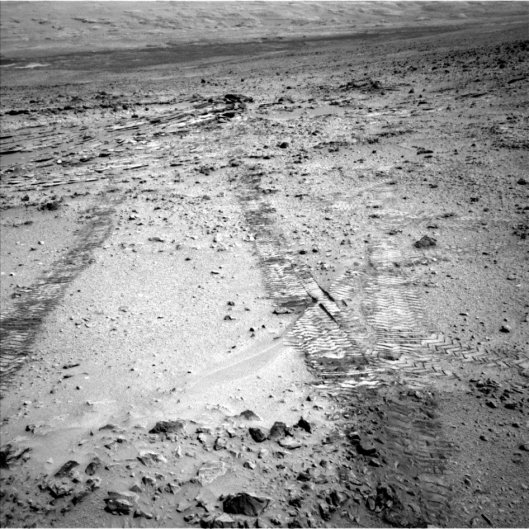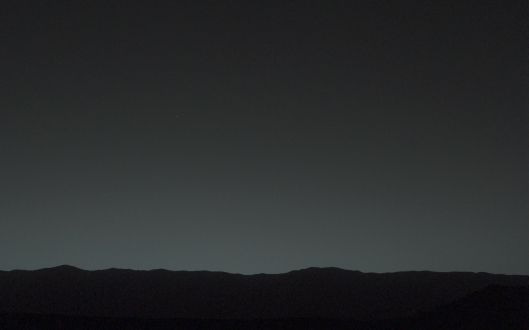Tags
Mars opportunity rover, Mars photos, Mars Reconnaissance Obiter, nasa mission, space exploration
Are we too late for the party?
NASA’s Curiosity rover celebrated its first Martian birthday last week, 686.98 days after successfully landing on Mars. (Remember: one Martian year = 686.98 Earth days) The Mini Cooper-sized rover, whose descent on Mars brought huge fanfare due to the infamous “7 minutes of terror,” has captured amazing photos during its journey. But Curiosity isn’t the only mission with its eyes set on the red planet. Here’s 10 of our favorite photos taken through the lens of various missions investigating the spooky and oftentimes deadly planet.
10 – Rocknest
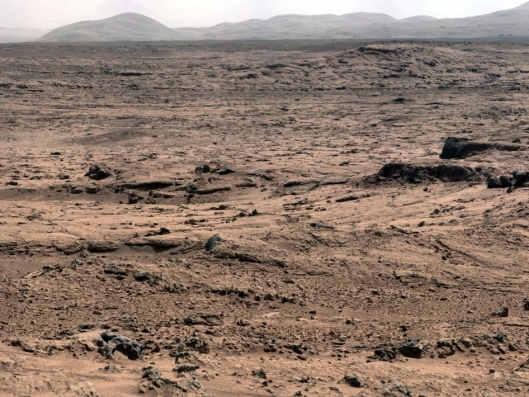
A beautiful mosaic of an area known as Rocknest. This composite image was taken in 2012. (NOTE: The photo has been white-balanced to show what the rocks and soil would look like if they were on Earth, according to NASA.) Photo courtesy NASA/JPL-Caltech/Malin Space Science Systems
9 – An eye on its tracks
Curiosity snaps a picture of marks made by its own wheels as the rover heads toward Mount Sharp. Photo courtesy NASA/JPL-Caltech
8 – (Dry) ice melt
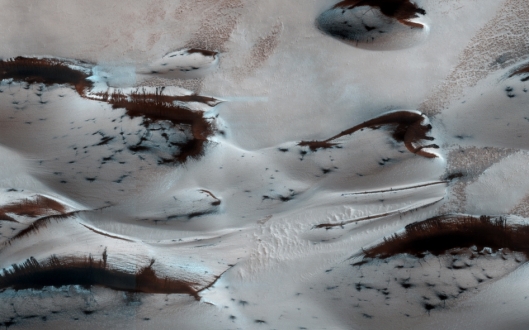
As the spring season begins, the red planet’s dunes are shown peaking from winter’s cold embrace. It’s not snow, by the way. It’s dry ice! The photo was taken by NASA’s Mars Reconnaissance Obiter in January. Photo courtesy of NASA/JPL-Caltech/Univ. of Arizona
7 – ‘Let me take a selfie’
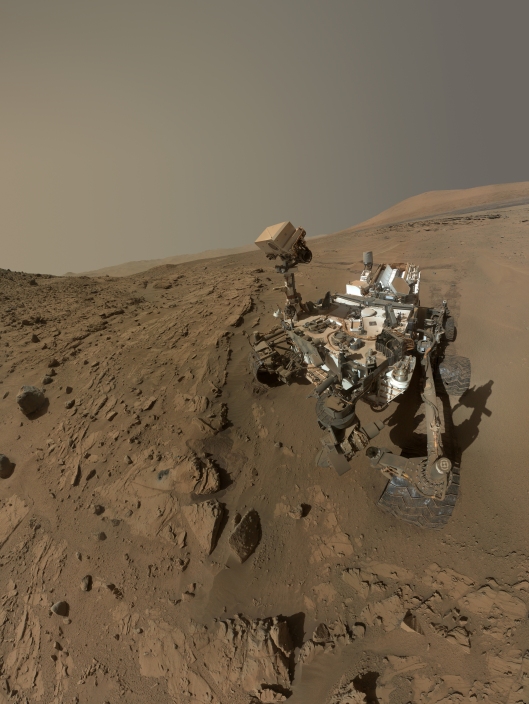
In early 2014, during the time Curiosity drilled into an area called “Windjana,” the one-ton rover took dozens of pictures that were combined into this selfie. Curiosity is looking good, no? Photo courtesy of NASA/JPL-Caltech/MSSS/TAMU
6 – Crystals found

This rock – dubbed Harrison – contains light and dark-colored crystals. Photo courtesy of NASA/JPL-Caltech/LANL/CNES/IRAP/LPGNa
5 – The most active dunes
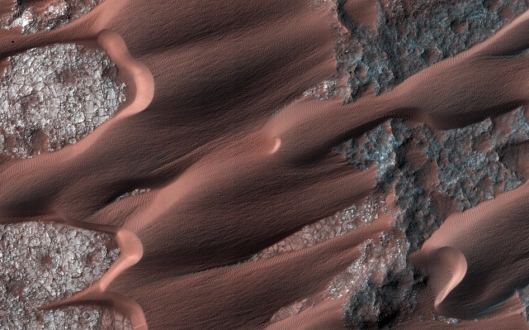
The Mars Reconnaissance Obiter has had its eye on these dunes, the most active on the red planet, for quite some time. This area, which is continually monitored to track changes in wind, is known as Nili Patera. Photo courtesy of NASA/JPL-Caltech/Univ.
4 – A dust devil
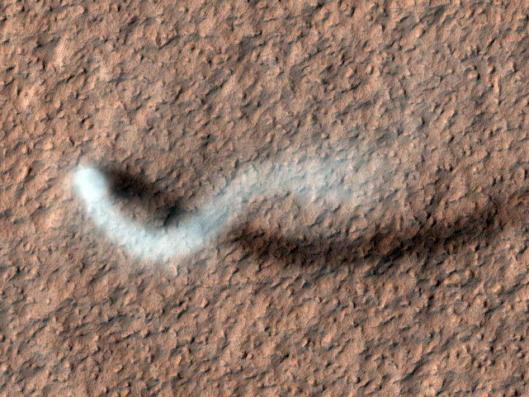
This dust devil casts a shadow on Martian soil. The image was obtained by NASA’s Mars Reconnaissance Orbiter. Photo courtesy of NASA/JPL-Caltech/Univ. of Arizona
3 – Metallic rocks?
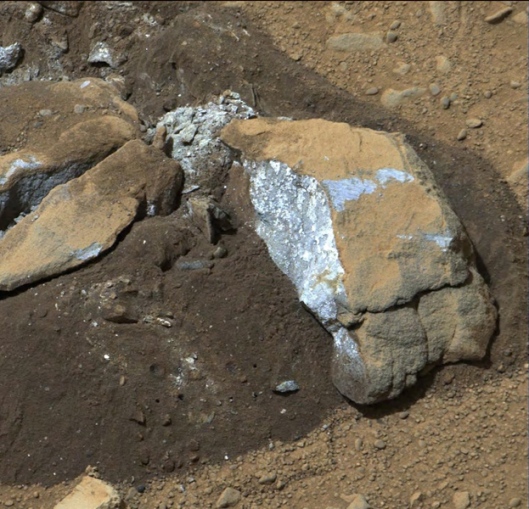
Curiosity exposed this rock’s shiny interior in 2013. “The inside of the rock … is much less red than typical Martian dust and rock surfaces, with a color verging on grayish to bluish,” according to NASA. Photo courtesy of NASA/JPL-Caltech/MSSS/ASU
2 – Where’d that rock come from?
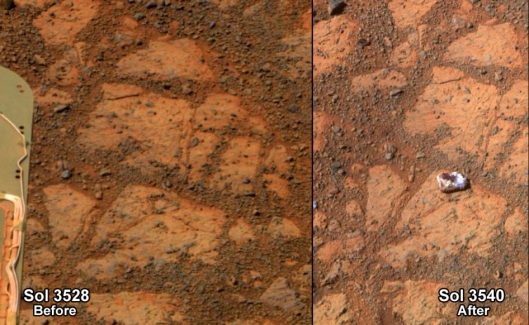
Above is a before-and-after picture of an area of Martian ground. The pictures were taken 13 days apart by another NASA’s rover dubbed Opportunity. How did the object, identified as a rock, get there? You tell me. Photo courtesy of NASA/JPL-Caltech/Cornell Univ./Arizona State Univ.

